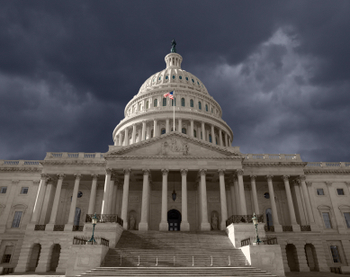
Debate ensues over the proposed Regulatory Accountability Act.
The regulatory process may need improving, but is the Regulatory Accountability Act (RAA) the best solution?
The RAA would amend the Administrative Procedure Act (APA) by, among other things, adding procedural requirements for new rules and guidance documents, increasing the role of the Office of Information and Regulatory Affairs (OIRA) in reviewing new regulations, and changing the scope and availability of judicial review of agency rules. Its proponents say that it would “improve accountability and the integrity of the rulemaking process,” while its opponents say the bill will prevent agencies from regulating.
What would the RAA actually require agencies to do when adopting new rules or issuing other regulatory documents?
The RAA would make several amendments to the APA’s section on rulemaking by imposing additional requirements for major rules—that is, regulations expected, among other things, to cost the U.S. economy $100,000,000 or more annually, cause significant adverse effects on competition with foreign-based enterprises, or lead to significant impacts on multiple economic sectors. The bill would also add obligations for high-impact rules—that is, rules that are likely to “impose an annual cost on the economy of $1,000,000,000”—and rules involving novel issues. For these three types of regulations—major, high-impact, and novel—the RAA would require agencies to publish an advance notice of proposed rulemaking at least ninety days before the notice of a proposed rule. While many agencies already issue advance notices, the bill would require agencies to do so and to include a determination of the legal authority for the potential new rule.
Currently, agencies use notice-and-comment rulemaking, which does not require that the agency conduct formal public hearings. Nevertheless, for high-impact rules, the RAA would require agencies to hold a hearing in accordance with the APA’s formal rulemaking procedures. The hearing would be limited to determining if the agency’s predicate for the rule is factually supported, if an alternative would achieve the same objectives at a lower cost, and if a costlier rule’s additional benefits exceed the additional costs. The hearing testimony and exhibits, along with the papers and requests filed in the proceeding, would constitute the exclusive record for the agencies’ decision.
At a recent committee hearing, one opponent of the bill, David Goldston, the Director of Government Affairs for the Natural Resource Defense Council, argued that formal rulemaking fell into disuse for a good reason: it required an inefficient amount of time and contributed little to the end result. Formal rulemaking obligations have become largely obsolete and disfavored by Republicans, Democrats, and the academic community, according to Ronald M. Levin, Professor of Law at Washington University of St. Louis.
Furthermore, the RAA would obligate an agency to “consult” with the Administrator of OIRA before the agency decides to propose a rule. Following this consultation – the content of which the statute leaves unspecified – agencies would need to publish a notice of proposed rulemaking that must include a “statement of whether a rule is required by statute.” The notice needs to include a preliminary determination that the benefits justify the costs of the proposed rule. The bill would require agencies to include a discussion of alternatives, the costs and benefits of those alternatives, and why the agency did not propose the alternatives. Agencies would need to include a “statement of whether existing rules have created or contributed to the problem” and whether the agency plans to amend or rescind such rules. Many of these requirements can currently be found in executive orders; however, the bill would make these obligations binding law, compliance with which would be subject to judicial review.
Testifying in support of the bill, Keith Hall, a senior research fellow for the Mercatus Center at George Mason University, argued that regulators should consider the many costs of rules, such as compliance costs and unemployment costs. At the same hearing, Diana Thomas, Assistant Professor at Jon Huntsman School of Business at Utah State University, argued that regulation has a regressive effect that agencies should consider when conducting the analysis of costs and benefits that the RAA will require.
Currently, independent agencies—such as many of the financial regulatory agencies that exist outside of federal executive departments—are separated from presidential control and, therefore, not bound by executive orders requirements. The RAA, by codifying executive orders, will expand the obligations imposed on independent agencies. Jeffrey Rosen, a senior partner at Kirkland and Ellis LLP in Washington D.C., applauded that the bill will extend the executive orders’ mandates for cost-benefit analysis to independent agencies.
However, Levin criticized the bill’s extension of cost-benefit analysis for all rules and reasonable alternatives for proposed or final rules. With agencies possessing finite resources, the bill’s added considerations for rules would be “overkill,” according to Levin. Moreover, he claimed that these additional requirements would override exist
ing law and spark unproductive litigation.
The RAA would also force agencies to consult with the OIRA Administrator about whether the agency observed applicable rulemaking obligations. Agencies would need to adopt regulations “only on the basis of the best reasonably obtainable evidence.” Additionally, agencies would only be allowed to adopt a costlier rule if the additional benefits justify the additional costs and the agency’s reasons for adopting the expensive rule are based on interests of “public health, safety, or welfare.”
Additionally, the bill would force agencies to fulfill additional requirements when issuing guidance documents—that is, those policy statements or legal interpretations issued by agencies that are not technically binding law. Right now, guidance documents are exempt from APA rulemaking requirements. The RAA would require agencies to determine that the guidance is understandable, complies with relevant statutes, summarizes evidence, identifies the costs and benefits of conforming to the guidance, and describes alternatives and estimates their costs and benefits. Agencies would also need to clarify to the public and local officials that the guidance is not legally binding.
In addition to the obligations imposed on rulemaking agencies, the legislation would require the OIRA Administrator to establish and regularly update its guidelines for agencies when they estimate the costs and benefits of rules and guidance. The OIRA Administrator would also need to issue guidelines to agencies designed to prevent duplicative or unclear regulations and guidance. All of the Administrator’s guidelines and determinations would be subject to judicial review under a deferential standard.
The bill would also amend a key APA section related to judicial review. An agency’s denial or failure to act on a correction request or an administrative appeal would become a final action subject to review. Except in cases involving national security interests, a party would also be able to seek judicial review of an agency’s decision to adopt an interim rule.
Finally, if the agency does not comply with the amended APA, then the bill would remove the deference that courts normally give to an agency’s interpretation of its own rule. Courts would also be permitted to review an agency’s determination of the costs and benefits of a rule if the agency does not follow OIRA’s guidelines. Further, agencies would no longer receive deference for “determinations made in the adoption of an interim rule” or agency guidance.
In his testimony, Levin voiced concerns over the legislation’s expansion of judicial review which he states would overextend the judicial role. Levin said that courts may turn into “super-regulator[s]” because courts could do their own cost-benefit analysis, make their own determinations about interim rules, create their own interpretations of regulations, and redefine policy statements contained in guidance documents.
The RAA was introduced in May of this year, and the House Judiciary Committee recently approved the bill.



